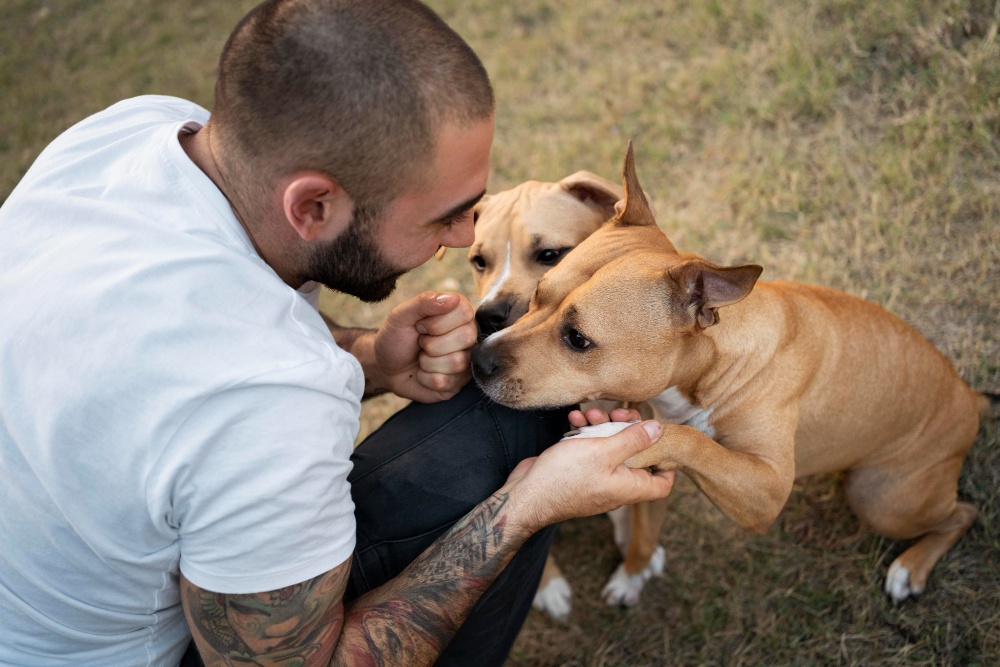While “obedience training” is a common term used to describe dog training, the procedure is more about helping your dog learn than teaching. Remember, trust is the establishment of any good pet-to-owner relationship.
Your dog’s fundamental needs include training and socializing. It would help if you taught your dog to sit, stay, come, go to their crate, and pee outside as soon as possible. Incredibly, as a beginner, you can do this yourself.
You and your canine pet will have a better time together if you train him to respond to basic cues. In addition, positive reinforcement training helps build a strong relationship between you and your dog.
Attending a class or two at a training school to see if the style of education is compatible with your values is a common practice. In most cases, dogs learn best through positive reinforcement training, which means rewarding the dog for making the proper decision and withholding rewards, or ignoring the dog for making a wrong choice.
Trainers and behaviorists have several key distinctions to make. A behaviorist may also be a trainer or a veterinarian, but this is not usually true. Meanwhile, trainers are trained to deal with the symptoms, but not necessarily the underlying reasons for those symptoms.
Separation anxiety can be lessened by teaching a dog new skills and allowing him to become used to being alone. To get to the base of the problem, a behaviorist would likely be needed, who would suggest you to a trainer if the behaviorist couldn’t help.
What Is the “Come” Command for Dogs?
When your dog gets away, and you can’t persuade them to come back, it’s terrifying. Cue the “come” command for the dog. If a wild animal enters your yard, or if you’re walking your dog off-leash and they get ahead of you, teaching your dog to come when called will help keep them safe.
Because it could save your dog’s life, “come” may be the most crucial command you can teach. Dogs’ curiosity can lead them into potentially deadly circumstances, such as in front of oncoming vehicles. The most important thing you can do when your dog is rushing toward a dangerous situation is to make sure they hear your voice above all else.
Like children, dogs have a lot to learn. They care about the immediate implications. The more they grow up, the more they grasp what we say. However, human voice tone significantly impacts a dog’s response more than the exact speech itself.
Consider yourself at the dog park, having a great time, when you suddenly decide it’s time to go. Put your dog on a leash or in the back of the car after telling him to “come.”
It’s critical to pay attention to how we carry ourselves and the tone of our voice. When we call them, we want to sound carefree and upbeat, so we sing and jingle. On the other hand, your dog may try to avoid us if we appear severe or frightening. For example, instead of bouncing between “here” and “come,” say “come” consistently.
How Do I Train My Dog to Come When Called?
For your dog’s safety and well-being, one of the most crucial lessons they can acquire is the art of “come” when called. Teaching a dog to come when called might be difficult because dogs are naturally curious beings. When we tell our dogs to come to us, we tell them to stop what they’re doing and pay attention to us instead.
It’s a way of saying that you’re turning away from dogs and food to come to us. Because of this, to create a strong recall, we must educate our dogs that just being nearby us is the most rewarding activity they can engage in.
The name of the dog is the only command that is used indoors. Therefore, it’s not a good idea to use your dog’s name to train them because it doesn’t instruct them on what to do.
You can call out his name if you want to know where your dog is. This is usually done to ensure he’s not getting into trouble. However, to break the habit of calling your dog by its name, teach him the command “come” instead, and be sure to praise him when he obeys.
Using “come” inconsistently can lead to your dog believing that you’re trying to trick him into doing something. “Come” should always signify “come all the way to me” to be a successful recall command. Rewarding your dog if he comes all the way to you is not a good idea since it could mislead him about what the command entails.
What Do You Do When Your Dog Doesn’t Come When Called?
In the same way, a child can be easily distracted, dogs need to be exposed to a wide range of surroundings, with varying levels of distraction, to learn new things. “Proofing” is the term for this.
If your dog doesn’t come when called, it’s possible that they haven’t learned to apply the command in all situations. When you command “come,” your dog may legitimately believe it means to come over to you, but only in the living room when you say it.
Another possible explanation for your dog’s unwillingness to obey your command is that they’ve had bad experiences with you. If you use an angry or frustrated tone when speaking with the dog, it will link your presence with a threat and run away. This will cause your dog to avoid you.
Teaching your canine pet to respond to your commands is one of the most crucial and challenging lessons. It takes time, effort, dedication, and consistency to get it perfect.
- It is preferable to lure them to you. But there are other ways to get a response from them besides simply chanting their name. Anything out of the norm that will get your dog’s attention, such as stomping your feet, jumping up and down, or doing the worm dance, should be done.
- Run away from your dog as soon as you get their attention. Running from your dog is the best way to avoid it. In most cases, dogs will stop what they’re doing to chase after you because they’re so fascinated by your unusual behavior.














